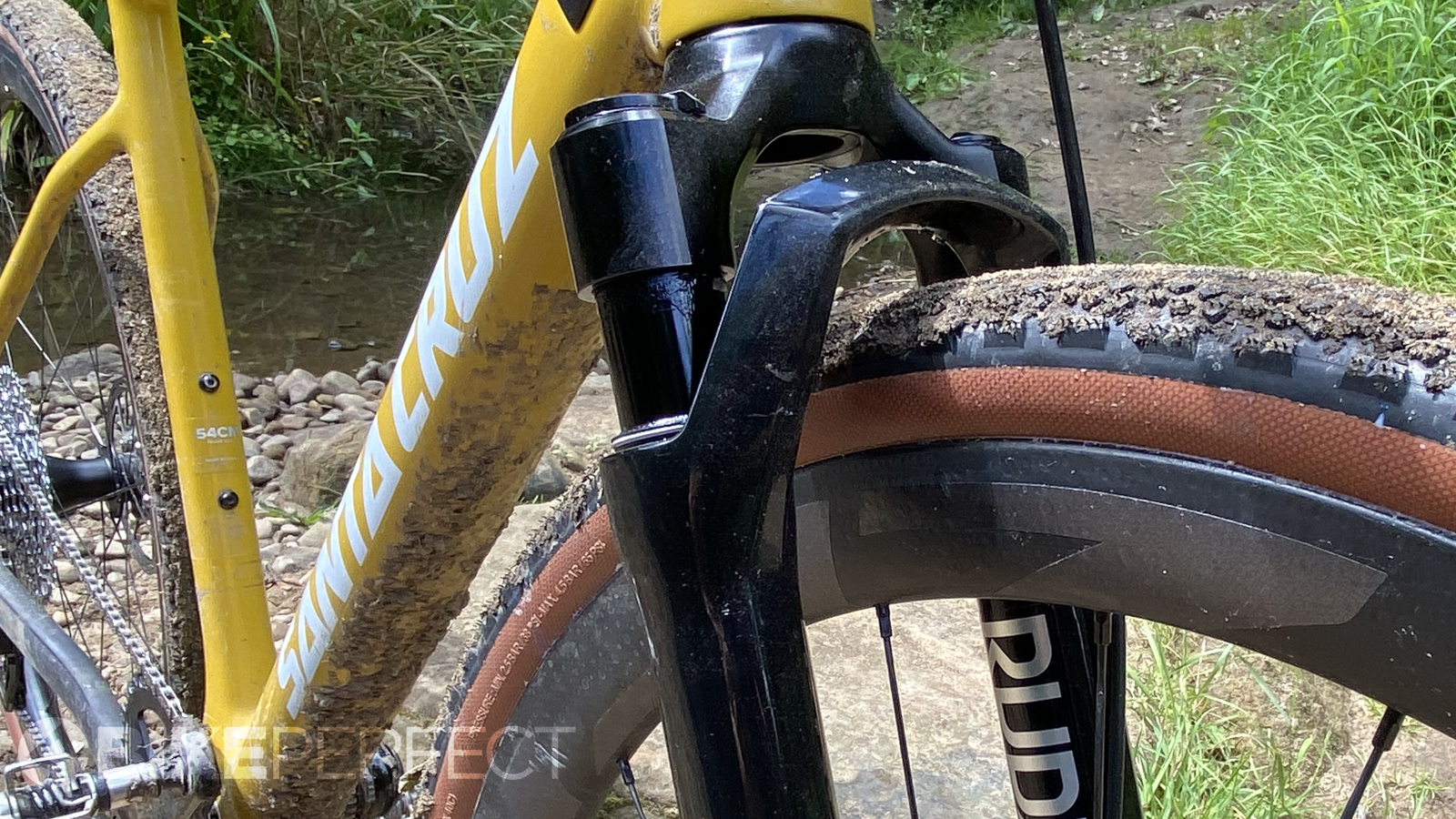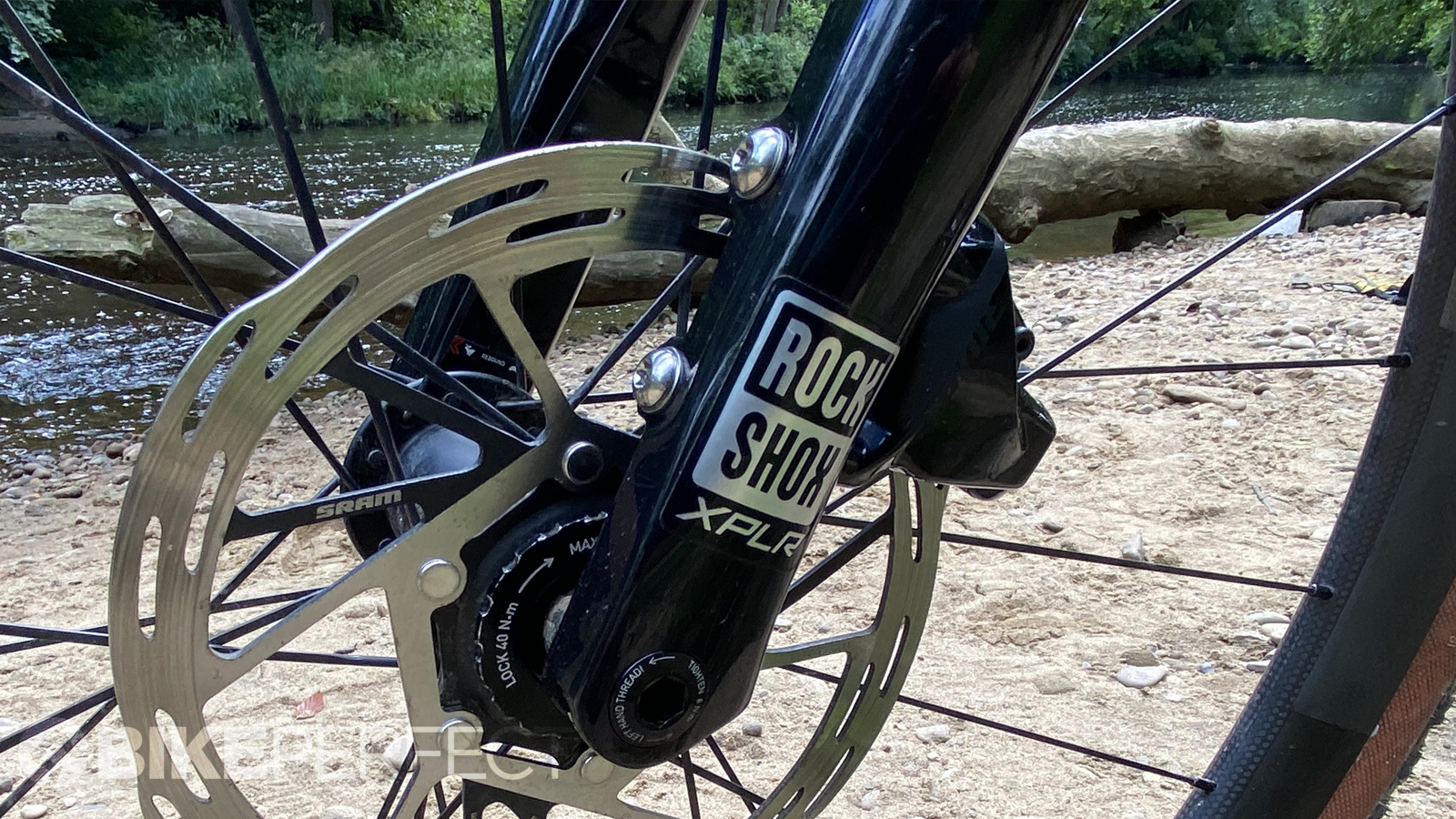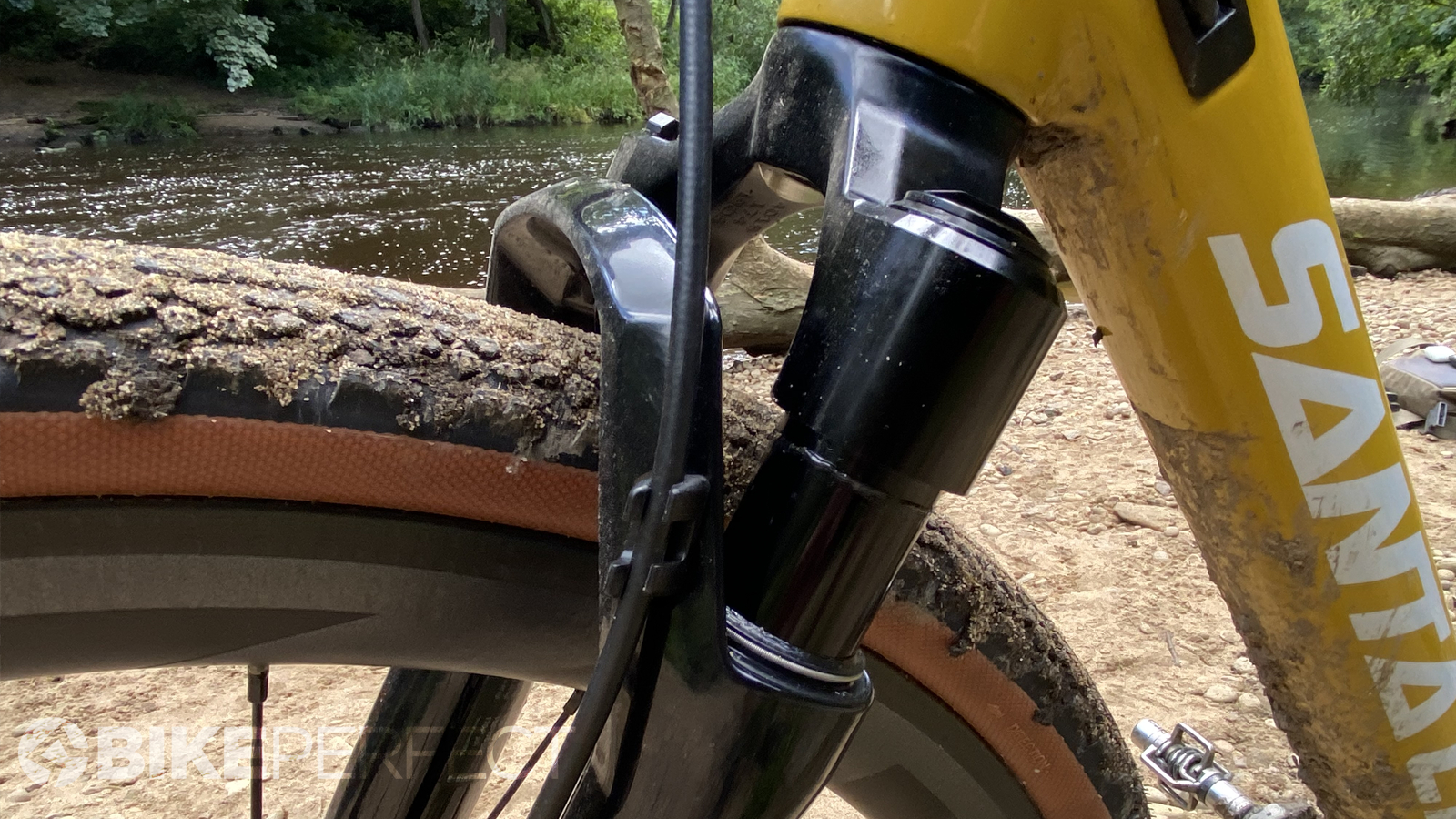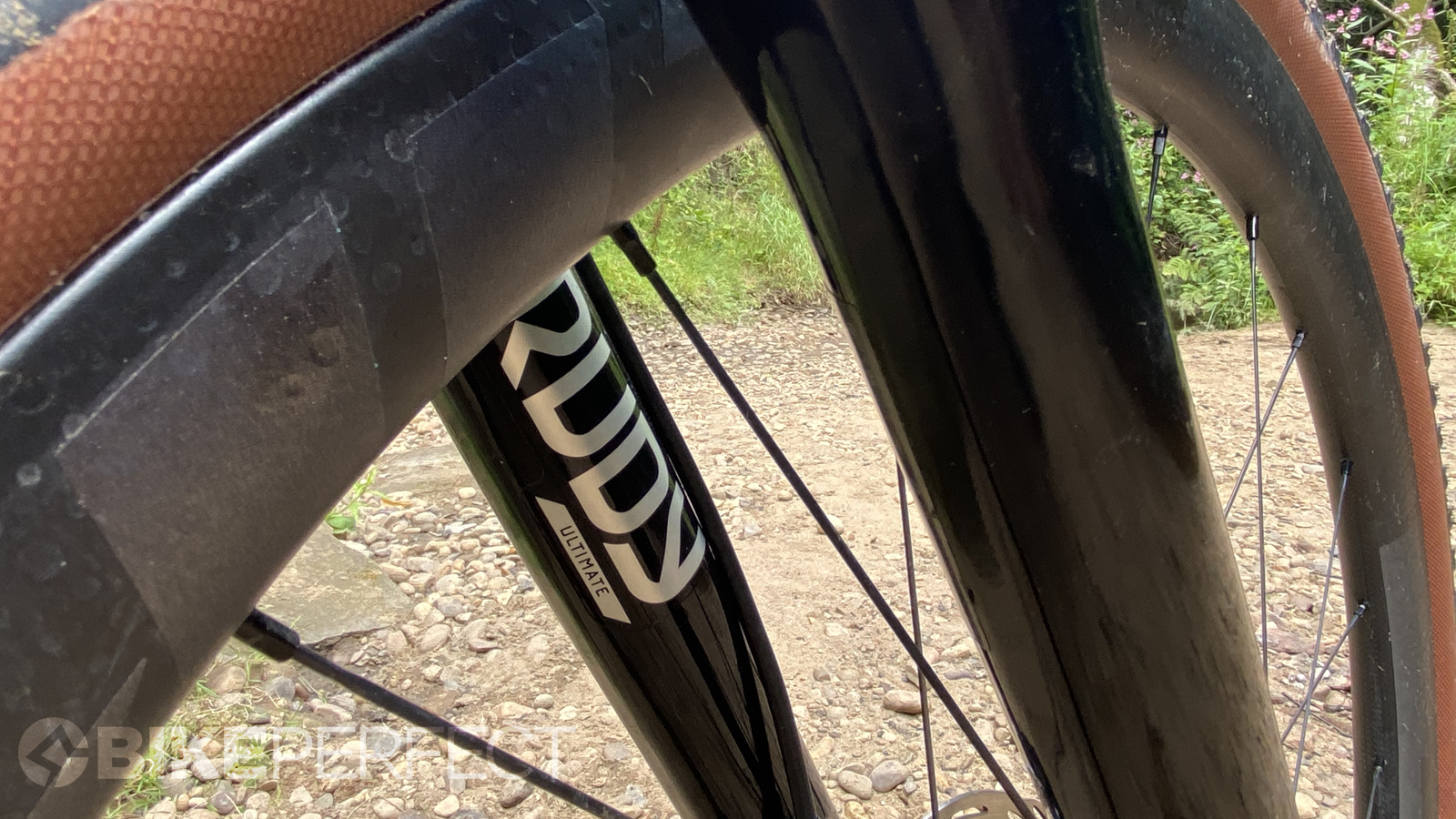Bike Perfect Verdict
RockShox has done a fantastic job of sliding significant control and comfort boosts into a fork that still fits gravel bikes physically and aesthetically
Pros
- +
Impressive control from 30mm stroke
- +
Super plush and responsive
- +
Lightest telescopic twin-leg option
- +
Adjustable rebound damping
- +
Decent tracking stiffness
- +
No brake flutter
- +
Fender compatible
- +
12x100mm axle
- +
Low profile crown
Cons
- -
Heavier than rigid or Lauf forks
- -
Lockout can be hard to grab
- -
Limited aftermarket offset options
Why trust BikePerfect
RockShox has taken a while to roll out its Rudy gravel fork, but it's used the time to create a totally new design rather than just a chopped-down MTB compromise. The result is the best gravel suspension we’ve used without obviously disturbing handling geometry. It doesn’t overly compromise slim fork aesthetics or fender fit either, but it potentially adds a lot of weight over a rigid fork and options are slightly limited.

Construction
Rudy is an all-new fork based around 30mm upper legs, with the Ultimate version getting an extra sculpted crown to minimize weight and bring Rudy in under 1,300g once it’s cut to fit most bikes. It’s got a narrow stance too but still has room for a 700 x 50mm tire. You could run fatter 650s although SRAM doesn’t say so officially as the smaller diameter could disturb the handling of the best gravel bikes. There’s space for bolt-on ‘shortie’ brace fenders or full mudguards, which bolt into neatly hidden mounts on the flared dropout tips.
The lower legs also taper inside and out towards the gravel standard 12x100mm axle, and the ends are open and hollow to save a bit more weight. The flat-mount brake bolts through from the front working with 160mm rotors if directly mounted, but you can run 180mm rotors if you add an adapter plate. The brake hose is held in a small clip block on the front of the left leg, and if you’re lucky your existing hose will just about stretch to fit. That’s because RockShox has managed to keep the axle to crown height to 425 or 435mm depending on whether it’s the 30 or 40mm travel version. The air cap and lockout lever are kept as flat as possible to maximize down tube clearance, too. Aftermarket offset is 45mm but 51mm offsets and straight 1/1/4 steerers are available for complete bikes as well as simpler non-lockout versions.

The suspension uses RockShox’s well-proven Solo Air Spring design but with the equalizer port for the negative chamber right at the top of the stroke. A big bottom-out bumper adds progression and stops a hard thunk at full compression. The smaller volume means pressures are about 50 percent higher than we’d run in the best mountain bike forks with their longer stroke, and the Rudy has an overall ‘system weight’ of 115kg/250lb; it is e-bike approved though. A miniaturized version of the already tiny Charger Race Day damper sits in the right leg with a very open compression tune and is locked out via a small, flat lever on the top crown. Rebound is adjusted via a tiny Allen key bolt tucked just behind the thru-axle inside the lower fork leg.
Performance
The first performance metric we can’t ignore here is weight. At under 1,300g - depending on steerer length - it’s 150g lighter than the current Fox AX gravel fork and MRP’s Baxter fork, which are its conventional twin-leg telescopic competitors. It’s 250g heavier than Lauf’s radical Grit glass fiber spring linkage fork though and 800g heavier than the carbon rigid fork of our Santa Cruz Stigmata host bike. If you’re running a rigid steel fork though, the weight is probably very similar.
Maxima Plush fluid lubricated seals on the smaller diameter legs and a very light compression tune in ‘open’ mode make for very easy and sensitive movement though. As a result, once you’ve got the pressure right (we ended up around 115-130 psi for a 70kg rider), the suspension action is immediately obvious even over the smallest ripples, rocks and roots. The 17 clicks of rebound adjust also cover a range from wide open to medium-slow (but not syrupy) so the emphasis is definitely on keeping the wheel reactive and in constant contact for grip, not sucking up big hits. The generous bottom-out bumper adds well-controlled compression so even when we ran it deliberately soft, full travel (and you do get the full 30mm) doesn’t end in a jarring thump.

That leaves you free to properly push on in a way that would throw the wheel all over the place in terms of steering and vertical kick on a rigid fork. That’s obviously an advantage on more technical descents where significant root and rock spreads and even sets of steps are now in the comfortably controlled zone. The suspension also reduces the jackhammer effect as you stiffen your arms when braking so you can stay relaxed and judge remaining traction levels better. What’s more surprising is how much it helps to carry speed into and up lumpy technical climbs, through rutted, erratic corners or just holding speed along rough/ribbed/normally rattling flat trails.
Steering precision is totally acceptable and we had no flutter or flex issues even when hauling hard on a 180mm rotor.
Once you’ve found the lockout lever (the flat top design can be elusive in gloves), the hard compression tune stops it bouncing when you’re grunting up climbs out of the saddle or spinning on the road. Having said that, we found we generally left it fully open even on mixed surface rides as the extra smoothness and pothole protection was still welcome on-road as well as off. While it will jack up the front end of most gravel bikes, by the time you add fork sag, just taking a spacer out from under your stem will put handlebar height back to roughly where it was.

Verdict
As a suspension fork that fits gravel bikes, RockShox has done an awesome job with the Rudy. It adds obvious confidence and comfort on rougher, more technical terrain. The way it sucks up stutter bumps and stopper impacts mean it boosts speed sustain and also keeps you feeling fresher a lot longer. It does take a bit of time to totally dial in, but there’s a good range of ride feels to suit most pilots and terrain. We like the fact it doesn’t look out of place when swapped for slim rigid forks and tire clearance, and fender compatibility and 12mm axle fit are all welcome features. Add an impressively low weight and that makes it our new benchmark for gravel bike suspension forks (although Fox has a fresh fork on the way, too).
Having such a capable fork on your gravel bike definitely means the grip levels and puncture resistance of smaller volume tires become the biggest performance-limiting link in the riding control chain. So if you’re looking at adding suspension to your gravel bike because you’re riding increasingly rough terrain on a regular basis, then maybe you should be looking at switching to a cross-country mountain bike instead. In which case the RockShox SID SL Ultimate is only 70g heavier when cut to fit but comes with a full 100mm stroke and room for 29 x 2.4in (63mm) tires.
Tech Specs: RockShox Rudy Ultimate XPLR gravel fork
- Price: $799 / £779 / €869
- Weight: 1317g (uncut steerer) 1270g (steerer cut to 200mm)
- Sizes: 700c x 30mm or 40mm stroke
- Colors: Black (tested), Qwiksand

Guy Kesteven has been working on Bike Perfect since its launch in 2019. He started writing and testing for bike mags in 1996. Since then he’s written several million words about several thousand test bikes and a ridiculous amount of riding gear. He’s also penned a handful of bike-related books and he reviews MTBs over on YouTube.
Current rides: Cervelo ZFS-5, Specialized Chisel, custom Nicolai enduro tandem, Landescape/Swallow custom gravel tandem
Height: 180cm
Weight: 69kg

